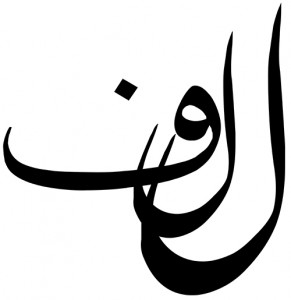Lahore, Lahore aye.
By Pran Nevile

No city in the subcontinent can boast of a more stirring or more turbulent history, or a stronger vitality, than Lahore—a city ruled by Hindu kings, Mughal emperors, Sikh monarchs, British sovereigns. Scholars, historians, and travelers passing through Lahore were enchanted by its majesty and grandeur. In the heyday of its glory as the capital of the Mughals, the city rose from semi-obscurity to eminence. It became the city of historical monuments and gardens. Lahore finds mention in John Milton’s classic, Paradise Lost. Thomas Moore in his celebrated Lalla Rookh describes the glittering life and pageantry of the palaces, domes, and gilded minarets of Lahore. Rudyard Kipling, the Nobel laureate who was raised in Lahore, immortalized the city in his writings.
The British rulers took active steps to safeguard and preserve old monuments and buildings of national interest and historical value. I remember that many new residential areas were developed in different parts of the city: Krishan Nagar, Sant Nagar, Ram Nagar, Ram Gullies, Krishna Gullies, Gowalmandi, Gandhi Square, Nisbet Road, Mozang and Quila Gujjar Singh. The most novel experiment was the construction of a modern township, Model Town, about six miles from the center, with spacious bungalow-type houses owned by the upper middle class of all communities.
Punjab University, established in 1882, was one of the oldest institutions of higher learning in the subcontinent. During my time Lahore had more colleges and schools for boys and girls both than even the Presidency towns of Calcutta, Bombay, and Madras. Government College, my alma mater, opened in 1864 and moved to its magnificent gothic structure in 1877. This building continues to be a prominent landmark. This college was regarded as a premier educational institution of British India. For women, Kinnaird College, established in 1913 by the missionaries, held pride of place in the country. In addition to other professional and technical institutions, a notable one for specialized education was the Oriental College set up in 1870 to promote the study of classical languages—Arabic, Persian, Sanskrit. Dr. A. C. Woolner, a German professor of Sanskrit headed this institution and his statue is the only one that still stands on the Mall in front of Punjab University Hall.
Coming to literary activities, the city was again very much in the limelight. There was a chain of reputed publishing houses bringing out books in all languages. The two English dailies, The Tribune and The Civil & Military Gazette, were the most prestigious newspapers of North India. In Urdu, Lahore boasted highly-acclaimed literary magazines and journals of those days like Humayun, Alamgir, Adabi Duniya and Adab-i-Lateef. All these had countrywide circulation and carried contributions from renowned writers and poets of the time.
Among the tourist attractions in my time for newcomers were the Ajaib Ghar (Wonder House) or the museum, and the Chidia Ghar, the zoo. Between these two stretched the famous Thandi Sarak or the Mall, which could compete in beauty and majesty with the best roadways in the world. On both sides were imposing modern buildings, housing leading shops and motorcar showrooms that catered to the European clientele, the native princely order, and the aristocracy.
Lahore was then also a shopper’s paradise and its Anarkali bazaar was famous not only in the Punjab but all over the country. Stretching over a distance of about a kilometer, Anarkali dominated the cityscape. As the most fashionable shopping center, it attracted visitors from far and wide and even from other provinces who came to Lahore on a spending spree. For them Anarkali was a vast storehouse of merchandise to suit all pockets. The famous bazaar, with a host of restaurants and bars, was also a place of fun, gaiety, and laughter. Anarkali was full of life, charming as a maiden in her youth beckoning one and all to partake of her beautiful gifts.
Lahorias of my day were infused with the secular spirit both in thought and action. The interplay of historical forces had made the Muslims, Hindus, and Sikhs less orthodox and ritual-conscious than elsewhere in the country. The three communities mixed freely and had friendly relations, subscribing as they did to a common Punjabi culture, which blossomed from the early years of the 20th century. Muslim influence of centuries had left its impact on the citizens’ way of life, customs, manners, and even their individual names. Hindus, Muslims, and Sikhs had many common first names. They had a common name for the Almighty as well. A Lahoria when invoking God would involuntarily call out “Oh Rabba.”
A popular saying on the lips of every Punjabi used to be “Jine Lahore nahin dekhya, oh jamian nahin” (“One who has not seen Lahore cannot be said to even have been born”). A city is not merely its bazaars and buildings. It is its atmosphere, ambience, moods of joy and sorrow, madness, sadness, fun and excitement, and above all its people, who constitute its soul. We Lahorias were so deeply attached to the city and its way of life that we were rarely tempted to seek fortunes elsewhere in the country. So much so that the educated young men looking for employment were most reluctant to leave the city and rejected offers elsewhere in the province or outside. They preferred to hang on in Lahore and wait for suitable openings there. They followed the old maxim:
Khaiye kanak chae bhugi hoye,Rahiye Lahore bhaven jhugi hoye.
(Take wheat even if it is moth-eaten. Let it be a shack only but live in Lahore.)
No wonder, Lahore, the most talked about city in the subcontinent, hailed as the Paris of the East defies description because Lahore, Lahore aye—the soul of the three Punjabs—West, East, and the Diaspora.
____________________________________________________________________________
Nevile was born in Lahore and served in the Indian Foreign Service; his books include Nautch Girls of the Raj. From Newsweek Pakistan’s March 1 & 8, 2013, issue.

